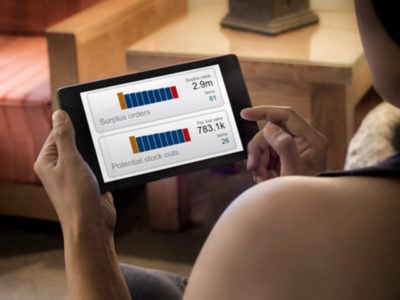Mar 18, 2019
Supply chain risk factors you need to balance

Achieving a balance between understocking and overstocking is an inventory planner’s daily reality. But there's more to the job than just monitoring item levels — there’s an ongoing balance of risk factors, both internal and external, that a planner must be fully aware of to keep a warehouse running efficiently.
The more you understand these elements, the better you can manage them. While most of the external factors are simply beyond your control, identifying the problem areas enables you to plan for and mitigate a variety risks — a key aspect of any inventory planner’s job. Let’s dive in on these internal and external supply chain dynamics.
Financial
Borrowing money to finance your inventory is an external factor, and you need to be mindful of the economy and carefully watch interest rates. Remember that the payment of an installment loan isn’t linked to the sales you make, whereas an equity loan will not require repayment until you’ve made some profits. The cost of borrowing money, therefore, needs to be factored in when looking at your stock. Tax write-offs associated with your inventory are internal factors that always come into consideration, especially when preparing for your financial year end. Other internal economic factors include the cost of your warehouse operations and transport costs, while the cost of fuel is an external factor that you have no control over.
Economic cycles
Your sales and customer service objectives are internal factors that you have complete control over, whereas economic downturns, political shifts, and local competition are external factors over which you have no control. Understanding consumer buying habits and being able to forecast buyer trends by keeping a keen eye on the markets may be your competitive advantage. Your stock holding should be in line with such forecasts, seasonality, and trends. Social media trends, like when celebrities become advocates or decide to boycott certain products, could seriously affect your business if your industry or supply chain are somehow involved.
Employees
While you may hire managers and staff to oversee your inventory processes, they are to a large extent an external factor. Although they work for you and perhaps even alongside you, they do not have the same vested interest in the business. You can't control movement of employees, but you certainly can reward employees who perform well and are important to the management of your warehouse and supply chain.
Suppliers
Finding and utilizing suppliers is an internal decision -- but if they turn out to be unreliable, this can become an external factor that is incredibly frustrating and difficult to manage. In some instances, you are limited to choice as there may only be a few suppliers for a particular product. In this instance, it’s vital to understand the lead time requirements and make sure you give yourself some extra buffer time. Finding and utilizing backup suppliers is another solution worth looking into.
Natural or man-made disasters
Natural or man-made disasters are important external factors in your supply chain, and this could have a significant impact on your business even if your primary location is relatively safe from such incidents. Implementing disaster contingency plans is an internal measure that can help you avoid potential losses and extra expenses that many companies cannot afford. Supply chain disruptions can occur from extreme weather, natural disasters, failing infrastructure, and more. Again, consider what contingency plans you should have in place in case a disaster impacts your business.
Commodities
The prices of commodities continually fluctuate beyond your control, which makes this a clear example of an external factor. Be sure to keep an eye on the costs of key inputs for your business that regularly shift. From an internal perspective, you can shop around for cheaper suppliers, but make sure any replacements are of adequate quality.
Product recalls
One final external risk to think about: product recalls from suppliers. An ill-timed recall can have dire consequences to the profitability and reputation of your business. One way to mitigate your risks is to do a thorough investigation into the quality of your supplier’s products by checking on their history. From an internal perspective, you should have a product recall policy and procedure to make this unfortunate possibility a little less disastrous.
Putting it all together
In summary, your internal factors are mostly known entities that you have some fundamental ability to control, and it’s those external factors that tend to throw you curveballs. While you can't have a plan in place for every potential scenario, it is advisable to draw up a list of external factors and how these would impact your business. Ensure that you revisit that list regularly to update the current situation and make sure that you have all the policies, processes, and procedures in place to help mitigate the fallout.
Connect with NETSTOCK CTO, Barry Kukkuk on LinkedIn here
Written by Barry Kukkuk
In 2010 Barry began his journey with NETSTOCK. His enthusiasm for Inventory Management and his strong belief in “all things Cloud” collided resulting in the release of the Inventory Management solution - NETSTOCK. Barry is the CTO at NETSTOCK, where he is responsible for all customer-facing technologies and systems that keep thousands of NETSTOCK customer instances working correctly.
